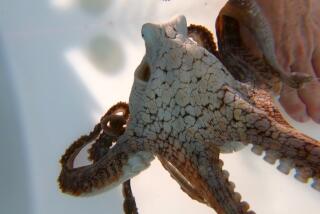Feed Sea Otters to Starving Ethiopians
- Share via
In response to “California Sea Otter’s Life and Death Struggles” of July 6 (by Allan Parachini), I am opposed to efforts made to expand the population and range of sea otters. The application of the Endangered Species Act and Marine Mammal Protection Act to the sea otter is absurd. Let me illustrate. Suppose we exterminate all rats in the U.S. save two. With the absence of this vermin, production of grains and food stuffs increases dramatically.
An organization known as Friends of the Rat petitions the U.S. Fish and Wildlife Service to have the rat put on the threatened species list. Since there are only two it is granted. To restore the species to its “optimum sustainable level” the rats are allowed to forage in a grain silo. In a short time their numbers increase to 1,400 with a corresponding decrease in grain. Fearful that this “historically” small population is vulnerable to accidental spraying of farming insecticide or defoliant, the service develops a “Rat Recovery Plan.” Rats will be translocated to a second grain silo to minimize the impact to the rat population that may occur from such an accident.
When farmers protest the depletion of grain they are told that grain harvests are unnaturally high because of the near extinction of rats. Therefore, high yields of grain should not be taken for granted. It is also reasoned that depletion of grain by rats is acceptable because the same depletions can occur with overfarming practices.
This scenario is ludicrous because the Endangered Species Act fails to recognize that ultimately mankind should be given priority over wildlife, not the reverse.
The U.S. Fish and Wildlife Service should be promoting the production of food for mankind: abalone, pismo clams, crabs and lobster. To do real service for mankind the U.S. Fish and Wildlife Service should provide starving Ethiopians with otter meat.
D. MIKE EMCH
Reseda
More to Read
Sign up for Essential California
The most important California stories and recommendations in your inbox every morning.
You may occasionally receive promotional content from the Los Angeles Times.













